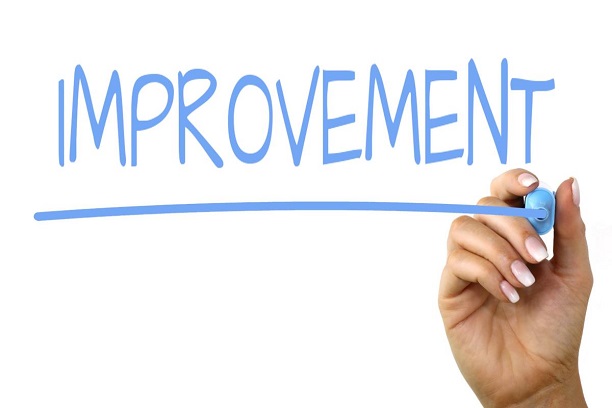Your organization should actively seek out and realize improvement opportunities that will better enable it to achieve the intended outcomes of the EMS.
Contents
Improvement may not always take place on a continual basis. ‘Improvement’ can be affected:
Potential sources of improvement opportunities include the results of analysis and evaluation of:
Your organization should actively seek out and realize improvement opportunities that will better enable it to achieve the intended outcomes of its EMS.
Look out for objective evidence that improvement is taking place. However, while improvement does not need to be continuous, it does need to be evidenced as occurring.

The organization is required to take whatever action is necessary to control and correct a nonconformity, and to deal with any resultant environmental impact.
Determine what caused the nonconformity and then to consider whether the potential for a similar problem remains. You will need to consider whether any further action is required to prevent a similar nonconformity recurring at the same place or occurring somewhere else, at some point in the future.
Auditors should evidence that where nonconformities have been identified an investigation has been conducted to determine whether other similar nonconformities actually do or potentially could exist and whether the organization has considered whether it needs to make changes to the EMS to prevent recurrence or occurrence elsewhere:
There may be instances where it is impossible to completely eliminate the cause of non-conformity, so in instances, the best organizations can do is to reduce the likelihood or the consequences of a similar occurrence happening again in order to reduce the risk to an acceptable level.
A corrective action should be considered as a reactive response to a problem since it is taken when a nonconformance is detected or upon receipt of a customer complaint.
Your organization should first contain the problem and then determine its root cause in order to take appropriate corrective action to prevent the problem’s recurrence.
Auditors should evidence whether your organization has identified improvement opportunities and EMS underperformance using the outputs from other processes such as, analysis and evaluation, internal audit, management reviews, tools and methodologies to support investigations. Auditors should also check whether the organization has implemented the identified opportunities for improvement in a controlled manner.
The standard provides help to interpret some terms used in this clause. ‘Continual’ means that this activity occurs over a period of time, but with potential intervals of interruption, while ‘continuous’ means duration without interruption.
Your organization should seek to implement a process, with appropriate methods, techniques, and formats for identifying areas of underperformance or opportunities for improvement.
You should expect to evidence that your organization has selected the appropriate tools and techniques to investigate the causes and thereby establishing and implementing a process for continual improvement.
The impetus for continual improvement must come from the use of (as a minimum):
Requirements for continual improvement interrelate with the following clauses:
Processes can always be made more efficient and effective, even when they are producing conforming products. The aim of a continual improvement programme is to increase the odds of satisfying customers by identifying areas that need improvement. It requires the organization to plan improvement systems and to take into account many other activities that can be used in the improvement process.
You will be required to ensure that you continually improve the degree to which your products and services meet customer requirements and to measure effectiveness of your processes. To this end the continual improvement principle implies that you should adopt the attitude that improvement is always possible and your organizations should develop the skills and tools necessary to drive improvement.
Once your environmental management system has been implemented, run the new EMS for at least three months to ensure it is fully embedded it into your business’s processes and to identify nonconformities, address corrective actions, and to implement any improvement opportunities. Engage with your chosen Certification body to arrange certification!
All of the ISO 14001 clauses are fully-documented and explained in our Environmental Management System Template (EMS).
We have procedures, templates, checklists, process maps, forms and gap analysis tools to help your documentation without missing a single input or output.
Before you invest all the hours reinventing the wheel, before you spend countless dollars outsourcing the task — try our templates.
Updated: 24th February 2022
Author: Richard Keen

Richard is our Compliance Director, responsible for content & product development.
But most importantly he is ISO's biggest fanboy and a true evangelist of the standards.
Learn more about Richard

Don’t Try to Manage It All Alone!
Our ISO Auditors and Quality Manager Trainers have been in this industry for years, and since 2002 we’ve been providing thousands of small businesses and large corporations with the tools they need to get certified.
Instead of trying to create everything you need to follow this process from scratch, use ours. We have procedures, templates, checklists, process maps, forms and gap analysis tools to help you control your documented information without missing a single input or output.
Before you invest all the hours reinventing the wheel, before you spend countless dollars outsourcing the task — try our templates.
| QMS ISO 9001 |
EMS ISO 14001 |
OH&S ISO 45001 |
|
Nonconformity & Corrective Action Procedure The purpose of this procedure is to establish the process for identifying, documenting and analyzing nonconformities and mitigating their impacts by implementing appropriate corrective actions. Your organization’s quality management system is geared toward the proactive elimination of actual and potential deficiencies. Nonconformities in products, services, processes and our management system are investigated and action implemented to prevent their occurrence. Forms & Reports also included:
> FREE DOWNLOAD - Control of Calibrated Equipment Procedure - this will give you a good idea of what to expect when you purchase the procedure. |
$19 USD |
$19 USD |
$19 USD |
ISO 9001 + ISO 14001 IMS Corrective Action Template
Everything you need to prepare for, manage and tighten up your Corrective Action documentation. |
$35 USD |
||
ISO 9001 + ISO 45001 IMS Corrective Action Template
Everything you need to prepare for, manage and tighten up your Corrective Action documentation. |
$35 USD |
$35 USD |
|
ISO 9001 + ISO 14001 + ISO 45001 IMS Corrective Action Template
Everything you need to prepare for, manage and tighten up your Corrective Action documentation. |
$35 USD |
||
Pay by Credit Card, Debit Card, PayPal or Apple Pay.


|
Please read our Money Back Guarantee. |
Bought by Small Businesses and Large Corporations our templates have been sold online and CD since 2002.
Used by:
The Templates are used by first-timers following our step-by-step, clause-by-clause guidance documents; and experienced Quality Managers wishing to streamline and improve their existing documentation.
The application of our templates is scalable and generic; regardless of the size and type of organization. The elements that form the quality management system are the same.
1. Our customizable templates save you time and money by offering a streamlined process to create your quality documentation
2. They’ve got everything you need in one simple template
3. Proven to work our templates have helped thousands of businesses big and small achieve certification
4. Documents use styles to make reformatting and rebranding a breeze
5. Our templates are generalizable for any industry or sector. The application of our templates is scalable and generic; regardless of the size and type of organization.